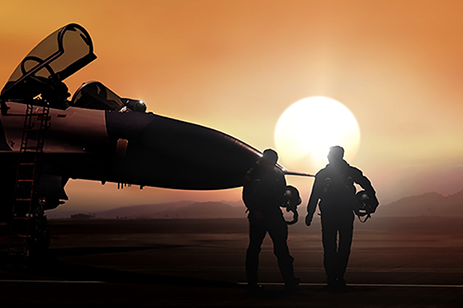
Brian Blass, program manager US Army & Special Forces at Curtiss-Wright, details the new TCG HUNTR hub, network translator at AUSA 2019. Brian demonstrates it to military vlogger Tom Varcie with Military Embedded Systems.
Tom Varcie: "Hi, Tom Varcie, Military Embedded Systems here at AUSA in Washington DC at the Curtiss-Wright booth. I'm with Brian. How are you, Brian?"
Brian Blass: "I'm doing well, thank you."
Tom Varcie: "Great. So, Brian is going to take us through a little demonstration of their award-winning product from Military Embedded Systems - they got a Best in Show Award - for TCG HUNTR. So, tell us about it.
Brian Blass: "Ok, well to start off, this entire shelf here is the architecture that we're simulating right now and in the middle we have the Parvus DuraCOR 8043 Flight Computer. This is available to go onto an aircraft. It has multiple outputs, multiple ports to connect any type of radio or any type of information device. We also have the ground-mounted display, with our HUNTR display on it. And this is simulating a gateway, a unit that can participate on both Link 16 and VMF, cursor-on-target, JREAP-C, Sesmo, which is electronic support measures operations, and TSM. In this computer we are running our BOSS software, which is Battlefield Operations Support System. This is simulating a Link 16 Terminal. It receives all the messages - that's why you see the aircraft and the objects on here. This is the terminal, the RF comes in, it's processed at this computer [the DuraCOR 8043] and displayed over here for the operator at the HUNTR to see."
"Now the important part for this is on the far end over here - the small computer - imagine that is a ground a soldier on the ground and they're needing to know where the bad guy is. Right there that's being reported on Link 16, being translated through the HUNTR software sent out over another waveform with a different message set, so that's what's important for the soldier."
"The other thing for the operator, the JTAC that's operating the gateway, this size is reduced down from about a half-refrigerator size, 2-man-lift piece of equipment, several hundred pounds that can be rolled on rolled off of an aircraft or onto a vehicle. This significantly reduces the size. Just add the radio to it, provide a power supply and they're able to operate."
Tom Varcie: "That's a lot smaller. It condenses everything."
Brian Blass: "It's a lot smaller and if you notice, there's no buttons on this. There's buttons for the display but really it is plug in, turn on, start up and it goes through the routines all on its own so you don't have to be a highly trained operator to operate this datalink equipment."
Tom Varcie: "Well this is a really all-synced up, really cool display at Curtis-Wright. Here at the show go to the Curtiss-Wright booth if you're here today and view the video, go to the website which is..."
Brian Blass: "It's curtisswrightds.com and just search for H-U-N-T-R and you'll find a product sheet as well as information to contact us about it."
Tom Varcie: "Great, thank you very much Brian."
Brian Blass: "All right, thank you Tom."